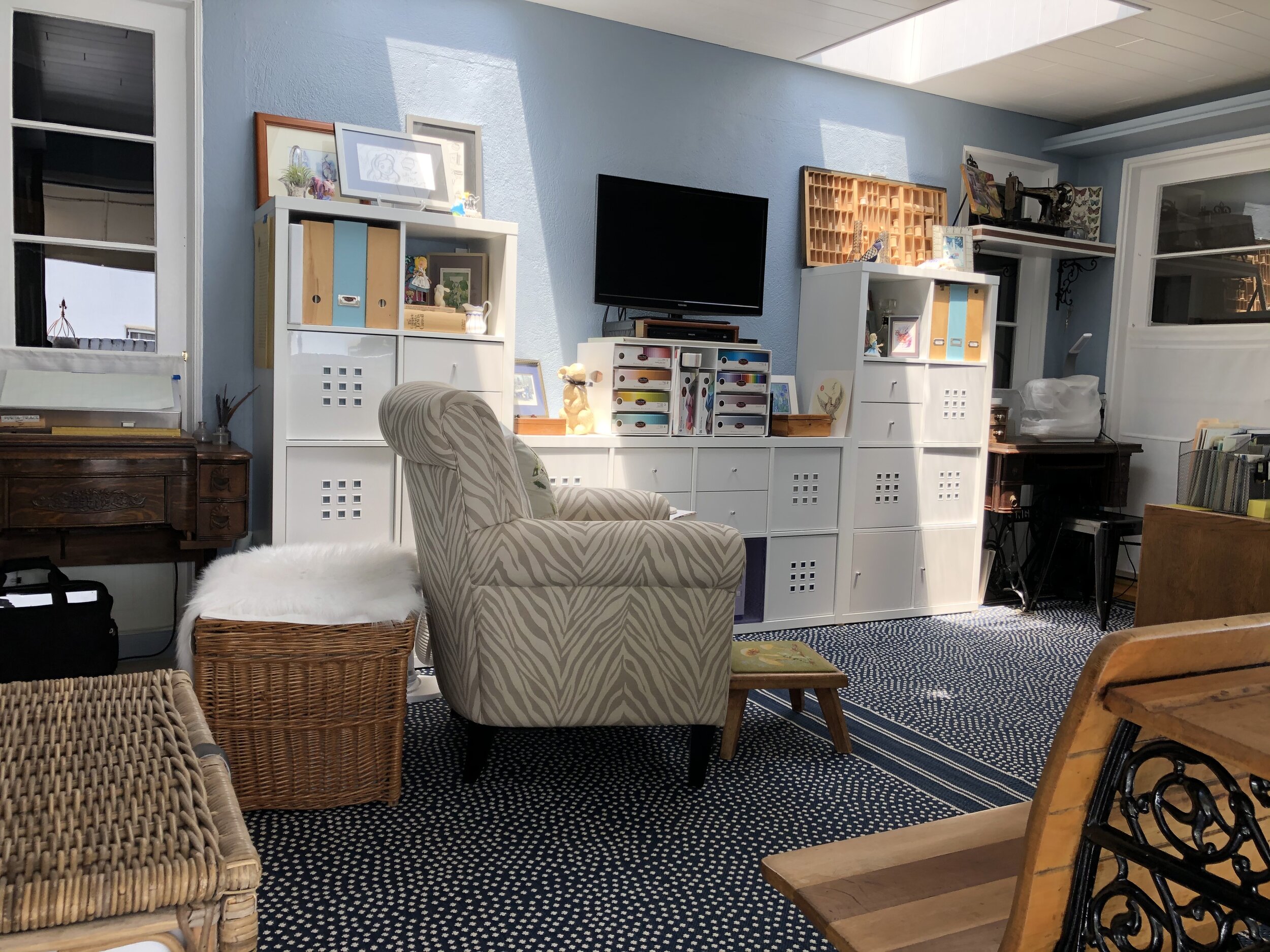Table compete, just waiting for chairs
A friend had an antique sewing machine in a lovely oak cabinet she was looking to dispose of, unless I had any ideas for another use for it. My friend had been using it as a side table, mostly as an interesting conversation piece.
I named a half dozen things she could do with it within a couple of minutes and she was intrigued with the idea that it could be made into a dining room table, since she was considering leaving her current dining table and chairs when she sold the house.
I explained that the ornate iron frame can be separated from the decorative oak box and sewing machine. She was hoping to have a round glass table top cut to fit the iron base. Knowing that the standard height for a dining table was 30” and the frame was only about 28”; an extension would need to be built or casters could be added to the legs for the additional height. Who could do this, she wondered, well, “the engineer” of course.
We collected the heavy— very heavy and awkward sewing cabinet and brought it to the “workshop”. The engineer was delighted with the new puzzle. Thinking we had found all the screws, we’d be surprised to have to search yet again for the reason the box would not separate from the frame.
Finally, with the two pieces separated, we went into discussions about how to build the frame. My very handy husband, wanted to buy new wood, but being a practical sort of person, I wanted to use what we had, in scrap, it would only be painted anyway. Oddly enough my husband had just cut up the pallet on which, the ceiling wood (Office Remodel Phase 1) had been delivered, and put into the trash. Ugh! I had suspected that part of the frame of the pallet was made of a very good hard wood; a friend thought it might be maple and I think he was right. I thought about all the different types of maple and think it is most likely,“ribbon maple”. A beautiful wood. There was only a very little of it having been used as the ribs of the pallet, but as luck would have it, just enough to make a beautiful frame for the iron legs and extension for the table top.
Painting complete, including a little gold leaf on the lettering at the base identifying the machine; all that was left was a round glass table top, my friend was delighted with the outcome.
A little gold leaf
The beautiful oak box was mine to do as I wished. I decided I did want to add it to the office as a permanent place for my light table. Now, however it has no legs! My dear friend and fellow designer Dawn, in Virginia suggested hanging it on the wall. I had thought of that, but there was a window where it needed to go, not a solid wall. Again, luck was on my side, it was just wide enough to clear the window and be fastened to the wall.
Nice fit!
The engineer was able to find some iron brackets to hold the weight of the oak box and cast iron sewing machine inside. In addition he used a piece of left over walnut to strengthen the bracket and support the box.
Two antique sewing cabinets in use.
The Antique Sewing Machine has served many masters, since it was built at the turn of the twentieth century, and now in the twenty first century, retirement is still in the future for this well built piece of history. It is perfect for my light table and the placement is ideal.



























